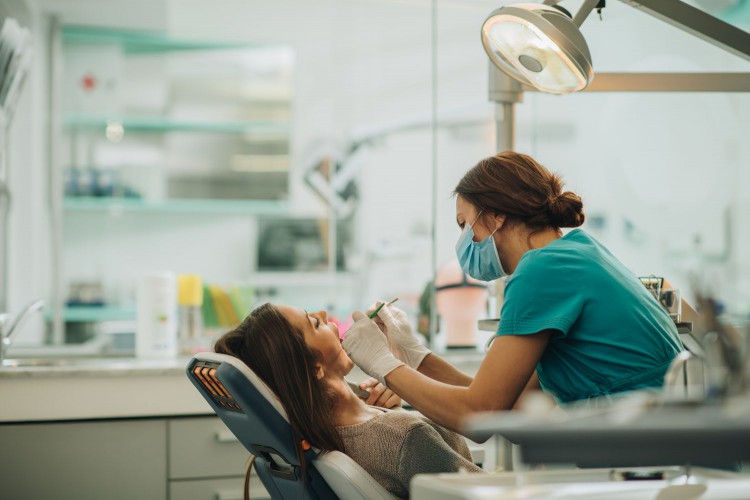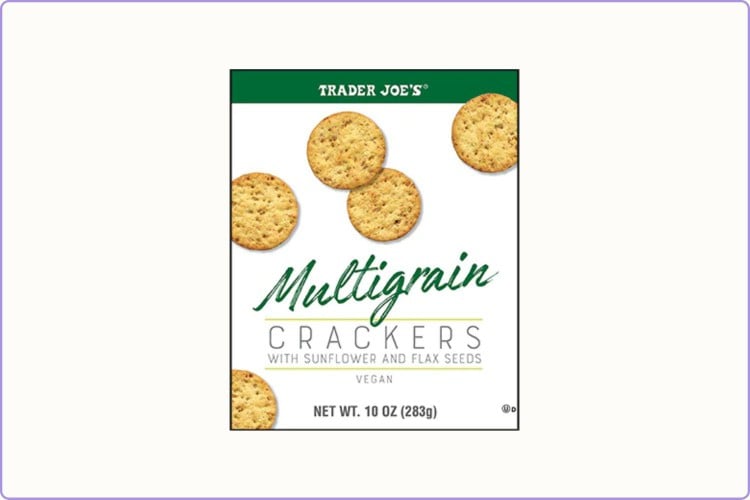- New research found that many popular cleaning products contain volatile organic compounds (VOCs), which can have harmful effects on your health.
- Green products—including products without fragrance—emitted the lowest quantities and concentrations of VOCs.
- Experts recommend choosing products with a third-party seal, like “A Safer Choice,” a “UL ECOLOGO,” or “Green Seal" in order to ensure you're picking a safer option.
Do your cleaning products contain harmful chemicals?
When it comes to keeping your home clean, tidy, and smelling fresh, most people reach for general cleaning products, including all-purpose sprays, glass cleaners, and air fresheners.
However, new research found these popular cleaning supplies, whether used in occupational or home settings, have been found to emit hundreds of volatile organic compounds (VOCs), which can be harmful to your health.
VOCs are a large group of chemicals that can easily evaporate into the air and pollute your indoor environment or air quality, explained Alexis Temkin, PhD, joint first author of the study and EWG senior toxicologist.
VOCs can be emitted from many types of consumer products like paint, cleaning supplies, cosmetics, flooring/carpeting, and pesticides.
These chemicals can cause harmful effects on human health, including irritation of the eyes, nose, and throat, difficulty breathing, headaches, and nausea. In some cases, VOCs may cause cancer, reproductive and developmental toxicity, and harm to the nervous system.
That's why you don't want to bring these chemicals into your home. But, that might be easier said than done.
Temkin and her team found 530 unique VOCs were emitted across 30 different products, including 193 hazardous VOCs that can cause health harms like respiratory system damage or increased cancer risk.
The team also looked at "green products"—including those without fragrance—and found they emitted the lowest quantities and concentrations of both total VOCs and hazardous VOCs.
“These findings suggest ways that people can reduce their VOC exposure from cleaning products, by using certified green products, especially those without fragrance,” Temkin said.
Getty Images / Maskot
Green, Fragrance-Free Products Emit Less VOCs
Temkin and her team looked at 30 products from 30 different brands, testing 14 traditional cleaning products, 9 that were identified as green with fragrance, and 7 that were considered both green and fragrance-free.
Among these tested products were air fresheners; all-purpose cleaners; carpet, floor, glass, and wood cleaners; and laundry stain removers.
The researchers found on average, traditional cleaning products emitted higher levels of both VOCs and more hazardous VOCs compared to green cleaning products, especially green fragrance-free products.
“Bleach, glass cleaners, and stain removers emitted some of the most hazardous VOCs,” Temkin told Health. “Bleach has long been known to release chlorinated by-products that are carcinogenic VOCs like chloroform, which we also found for the two bleach products we tested.”
She explained that glass cleaners frequently contain high concentrations of intentionally added VOCs, such as glycol ethers like 2-butoxyethanol, which have been linked to respiratory health issues.
The team found green cleaning products emitted only half the number of VOCs compared to conventional ones.
However, out of all the product categories, Temkin said the fragrance-free green products emitted the lowest number of VOCs. They emitted nearly four times fewer VOCs than scented green products and almost eight times fewer VOCs than scented conventional products.
Can “Green” Cleaning Products Still Contain VOCs?
“Green” or “eco-friendly” cleaning products that are certified by third parties can still contain VOCs, Michael Kleinman, MD, PhD, adjunct professor of Environmental & Occupational Health and co-director of Air Pollution Health Effects Laboratory at the University of California Irvine Public Health, told Health.
However, these kinds of products are supposed to contain fewer VOCs and fewer harmful agents compared to products that have not been certified by reputable and known third-party certifiers, including GreenGuard, USDA Organic, and A Safer Choice.
Health Risks Associated With VOCs
Exposure to VOCs can cause many short-term adverse effects, including eye, nose, and throat irritation, headaches, loss of coordination, nausea, and some respiratory issues for people who might have a history of asthma or chronic obstructive pulmonary disease (COPD), Arie Francis, MD, an emergency medicine physician who specializes in medical toxicology and emergency medicine at Stony Brook Medicine, told Health.
The long-term health effects potentially include things like malignancies, such as cancer, leukemia, liver and kidney damage, bone marrow disorders, and central nervous system damage, Francis said.
A 2020 study found that people working in the cleaning industry have a 50% higher risk of developing asthma and a 43% greater risk of COPD.
The use of certain cleaning products might also pose a risk to children’s health, with some studies suggesting that higher use of these products during pregnancy and infancy is linked with a higher risk of asthma and wheezing in childhood.
While numerous studies have established that exposure to VOCs, especially from cleaning products can cause health risks and harms, more research is needed to determine which VOCs or combination of VOCs are causing the most harm, Temkin said.
For instance, “some VOCs are linked to more severe health effects like cancer or reproductive and developmental toxicity," she said.
Some Groups May Feel the Effects of VOCs More
Certain groups may have a higher risk of adverse effects from VOC exposure compared to other individuals.
“For example, VOCs could increase the risk of asthma exacerbations or other respiratory conditions, and exposure to VOCs during the prenatal period could also impact children’s health,” said Lesliam Quirós-Alcalá, PhD, MSc., assistant professor in the Department of Environmental Health & Engineering at the Johns Hopkins Bloomberg School of Public Health.
High-Risk Groups for Effects of VOCs
Groups that may be at greater risk from VOC exposure include:
- Individuals with pre-existing conditions, such as those with asthma or who may be immunocompromised
- Young children
- The elderly
- Women of reproductive age or who may be pregnant
- Those working in professions with high exposure to VOCs such as in professional, commercial, and residential cleaning of indoor spaces
According to Francis, there isn’t an exact quantitative measurement to determine how much exposure to VOCs someone would need to experience health risks.
“There aren't any hard, fast numbers specifically because each VOC has its own baggage associated with it if you will," he said.
He explained that certain chemicals can be very destructive at very low concentrations and in space, while others can be much more tolerant at higher concentrations. It just depends on which chemicals and products you’re specifically working with and the environments that you’re working in.
For instance, if you’re working with chemicals every day in the industrial space, “there is probably going to be a more delineated value as far as what the air quality is going to be like," he said.
Choosing Safer Cleaning Products For Yourself
Typically, a strong giveaway that a cleaning product has a high VOC content is if it has a strong odor to it, especially after use, Francis said.
“The best giveaway that you can sense if there’s a strong VOC presence in these chemicals is if there’s a very potent odor to them, especially one that might be irritating to the nose and throat,” he said. “That’s usually one of the earliest signs that it may have a high VOC content in them.”
Reducing VOCs Exposure
Here are some recommendations to reduce VOC exposure:
- Choose products that do not contain fragrances, perfumes, dyes, or flammable ingredients
- Ventilate the space by using a fan and opening windows and doors to circulate the air and allow fresh air in
- Wear proper cleaning gloves and other protective equipment like goggles so that you do not come in direct contact with the cleaning agents
- Avoid using cleaning products when children or other vulnerable individuals are around
- Make your own cleaning products at home using warm water and soap
- Never mix bleach or bleach-containing products with any other cleaner that contains ammonia
Another way to determine possible emission of VOCs is to read the labels and ingredient lists, in addition to doing your own research about them, Quirós-Alcalá said.
Just be aware that in the U.S., manufacturers are not required to list all product ingredients and consumers must be careful not to fall into the “greenwashing."
“Terms like “green” or “eco-friendly” are marketing terms that are not strictly regulated," she said. "Also, these terms do not necessarily mean they are safer.”
When purchasing products, Quirós-Alcalá recommends opting for those that have the “A Safer Choice” a “UL ECOLOGO,” or “Green Seal” logo. These third-party stamps of approval mean the product has been tested more thoroughly and found to be safe.
How to Use Cleaning Products Safely, According to Experts







